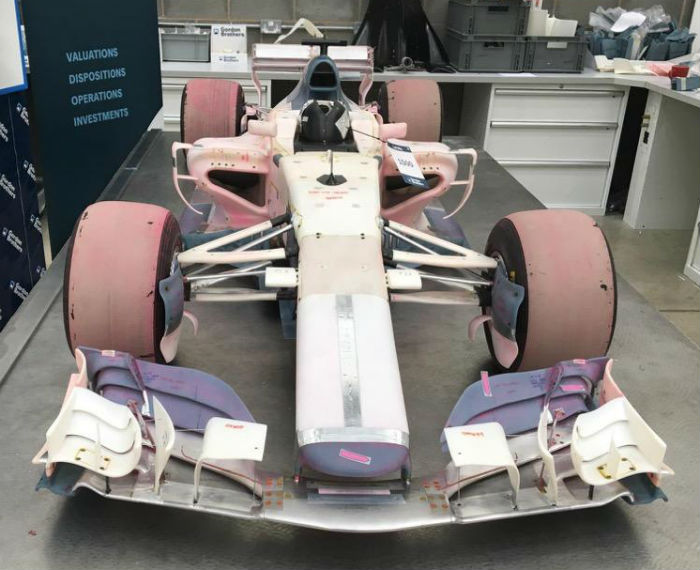The Manor MRT06 is one of those Formula 1 cars that never was. Designed to the new for 2017 regulations the first two cars were nearing completion when the Manor F1 Team closed its doors for the final time. The car was created by a team of engineers headed by John McQuilliam (Technical Director) and Luca Furbatto (Chief Designer) with Nikolas Tombazis (Chief Aerodynamicist) and Tim Milne (Head of Aerodynamics) looking after the wetted surfaces.
Manor was the last remnant of Max Moseley’s new teams experiment of 2010 and the team had struggled financially for some time, already having falling into administration once before at the end of the 2014 season. It was rescued then but at the start of the 2017 season it was clear to the team’s owners it could not continue.
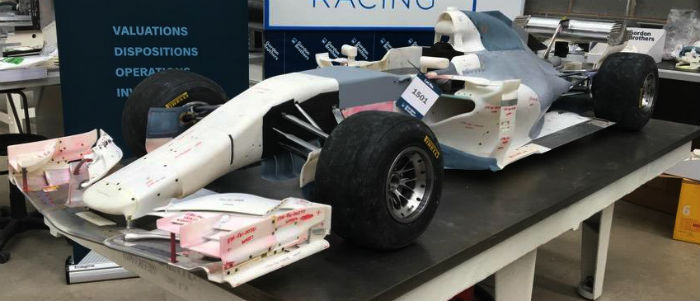
The MRT06 likely started life in the wind tunnel using a heavily updated version of the 2016 wind tunnel model (above). This model had something of an interesting life, it started out being built in 2014 for use on the development for the ultimately stillborn MNR1 / MR04 2015 design (below).
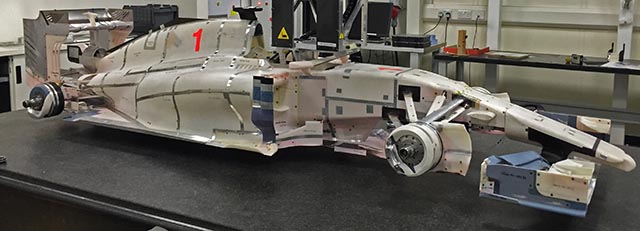
When the team collapsed at the end of the 2015 season the model was sold off to a collector then re-acquired by the team in order to develop the MRT05!
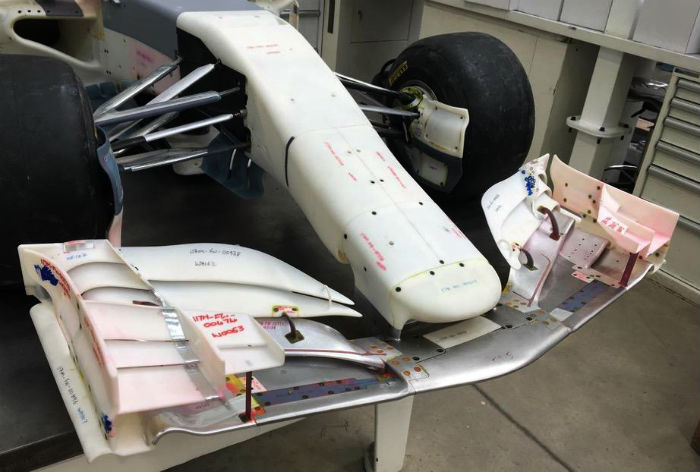
The model was then adapted during the spring of 2016 with a number of 2017 parts including the new swept back front wing (above). Note that the nose fitted to this model is vented with a Mercedes style inlet on the underside.
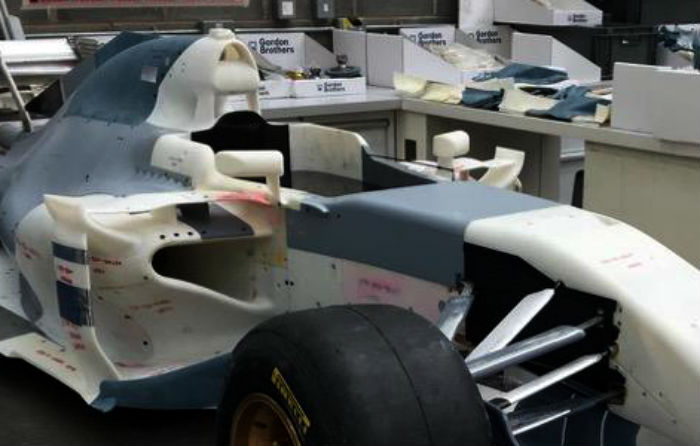
The corresponding exit duct is just visible above the front suspension pushrod. Note also the turning vane arrangement around the leading edge of the sidepod.
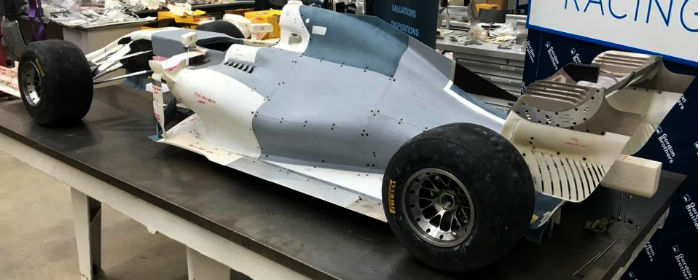
Looking from the rear an early version of the lower and wider rear wing mandated by the new 2017 aerodynamic regulations can be seen. Note the amount of vents in the end plate (above and below).
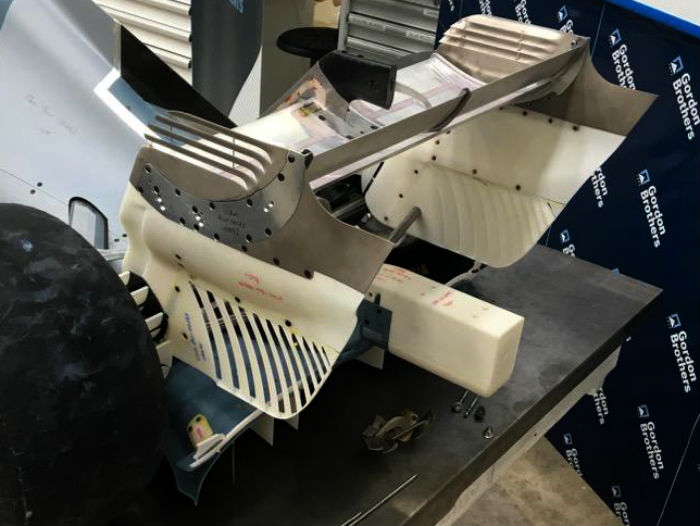
The 2017 technical regulations were not finalised until March 2016 and the wind tunnel tyres were not sent to teams by Pirelli until mid April ’16 which delayed proper development of all new cars. Once the tunnel tyres arrived Manor fitted them to a brand new wind tunnel model (below).
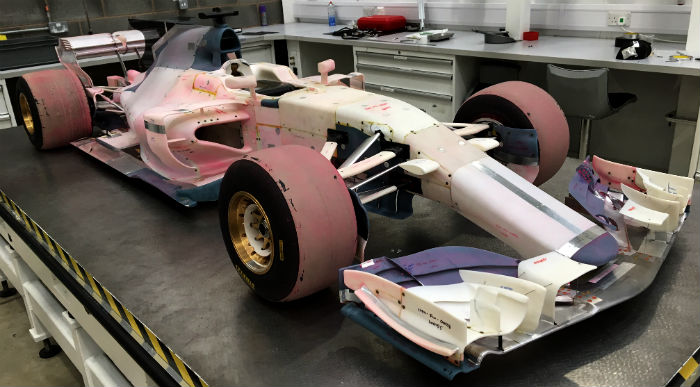
In the pictures seen here of the new model the car is in the same specification it was in following its last ever wind tunnel session which took place in December 2016. The 60% scale model reveals a conventional design with a push rod front suspension layout and a pull rod rear. A dorsal fin is fitted to the engine cover.
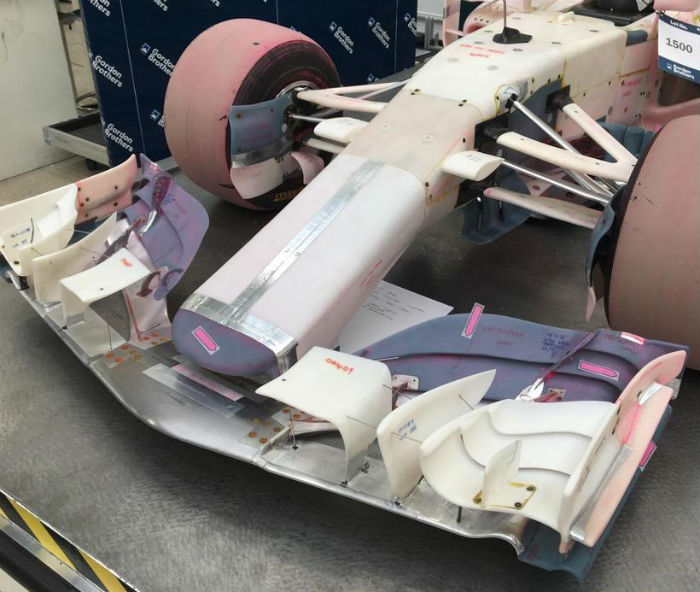
A look at the front wing and nose design of the MRT06, the tip of the nose is at the minimum allowed length defined in the regulation. It is worth noting that the final spec nose was not ducted, though the team did look at various options of ducted nose it was felt that the benefits such layouts bring were not worth the investment needed to fully optimise such a design.
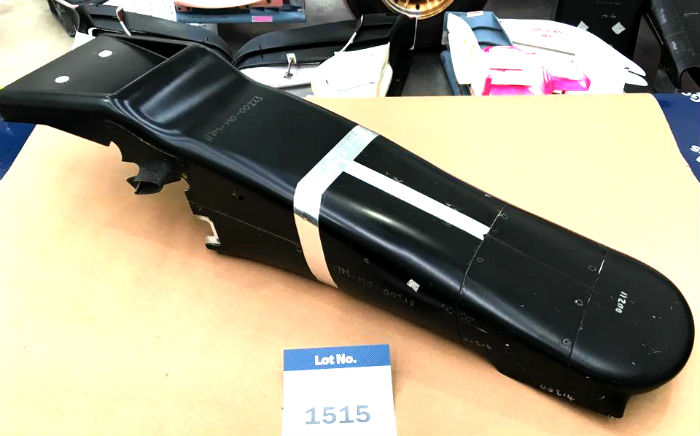
Various nose shapes were trialled including this rather aggressive looking ducted concept, clearly tested before the team decided to abandon the concept.
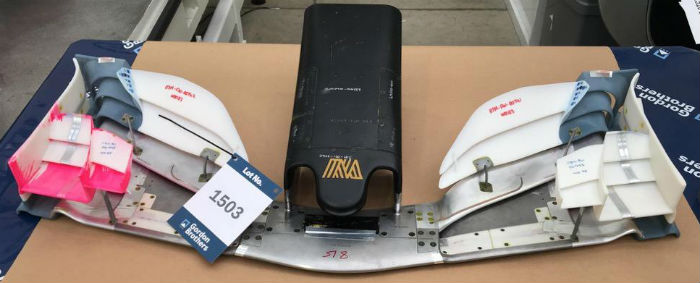
A conventional ‘thumb’ style nose was tested, interestingly this could represent a rather different style of front impact structure.
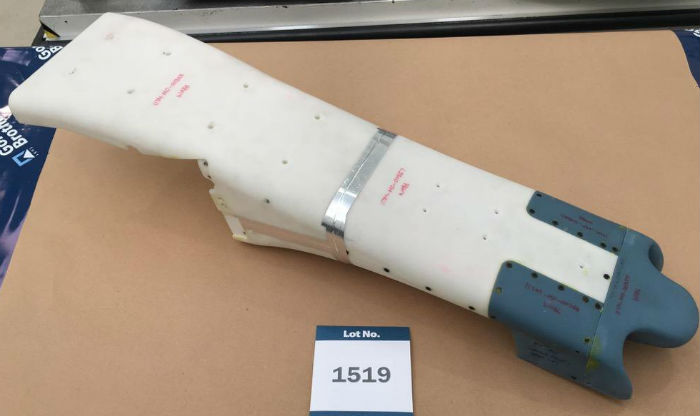
Finally lots of variations on the final nose shape were tested in the wind tunnel as well (below).
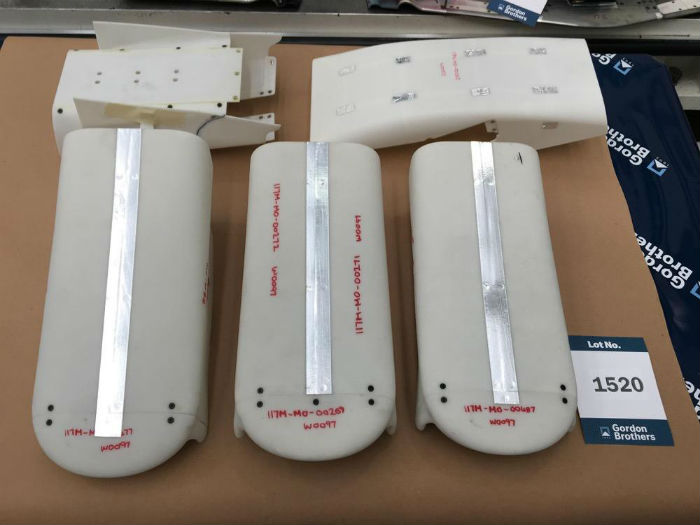
Note the differing lengths of the different test noses, clearly something that the Manor engineers felt may offer some kind of gain.
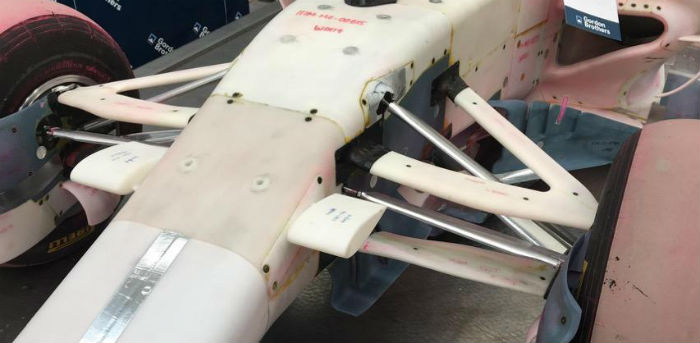
The front suspension members of the MRT06 are notably bigger than those of the MRT05, this is due to the much higher loads passing through them in 2017, an increase of at least 25% year on year. Internally the front suspension layout had a fairly conventional design with coupled torsion bars providing heave and roll stiffness. The front suspension also had split heave and roll damping.
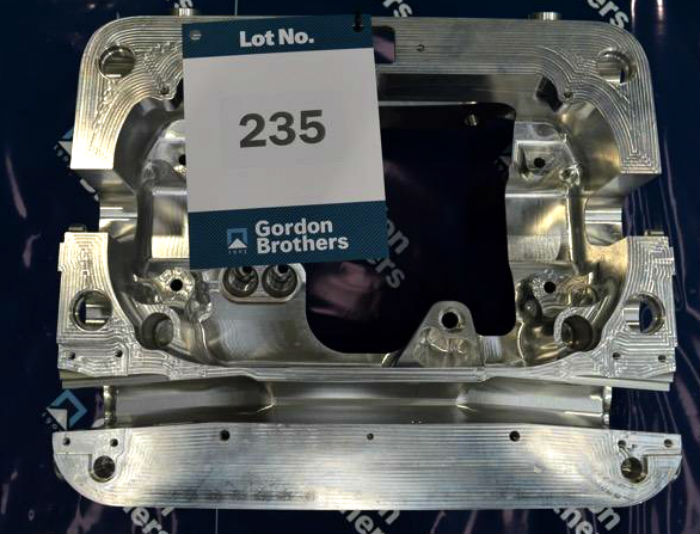
These components would have been mounted on a machined metal front bulkhead which would have been bonded into the front of the composite tub (above & below).
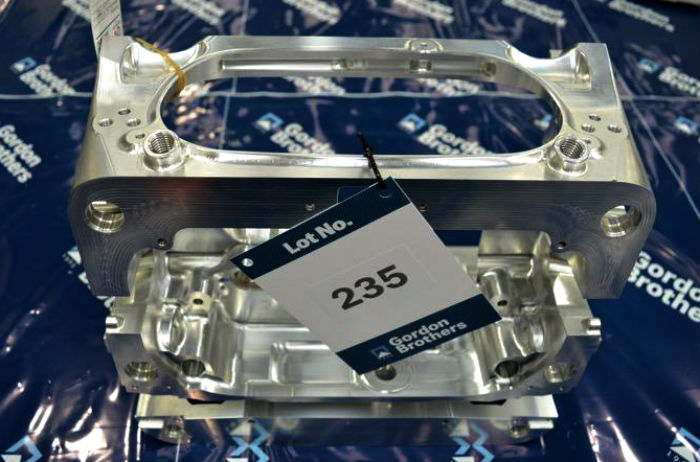
The post closure auction describes the inserts as being made from Titanium though sources at the team have said they were made from Aluminium, it is not clear which is accurate.
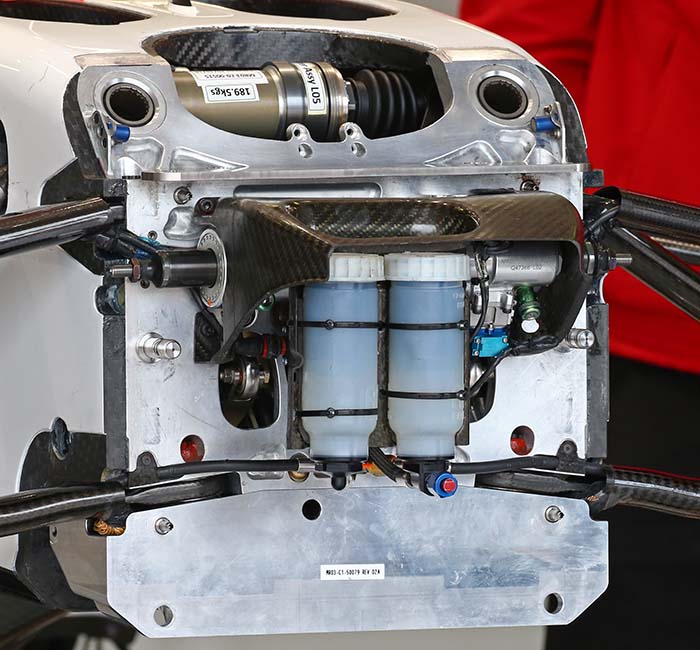
It is an approach Manor used with the MRT05 and the MR03 (above), and one Dallara also used on the two Haas designs built to date.

A look at the bargeboard arrangement of the MRT06, it appears less complex than those seen on many cars on the 2017 grid, perhaps a reminder that work on the car stopped months before others did. Note the sidepod duct shape, it appears to be smaller than that used on the MRT05, despite cooling requirements increasing in 2017. Team sources claim that the 2016 car was actually over cooled allowing the sidepod size and duct size to be reduced.
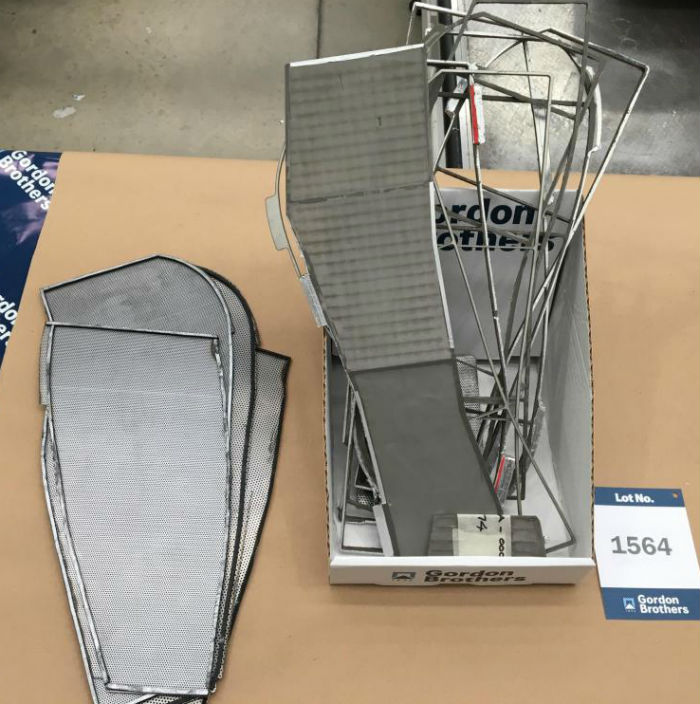
The shape of some of the coolers experimented with can be seen here. What the final cooler layout looked like remains unclear.
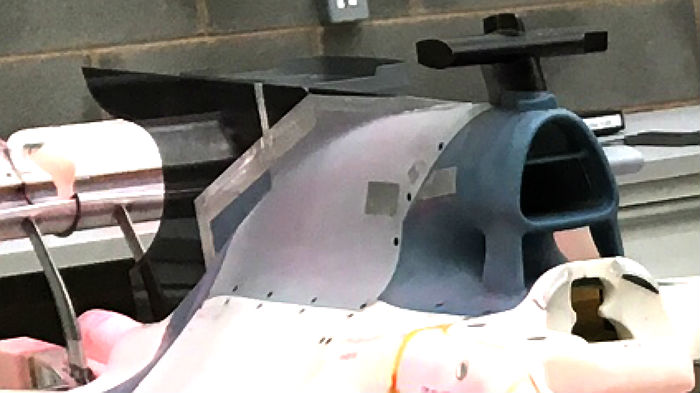
The roll hoop design largely carries over from the MRT05, featuring two forward remote supports and a roughly triangular air duct. Manor decided again to split the duct into two segments, the upper most part feeding a heat exchanger mounted above the transmission and the lower part feeding combustion air to the Mercedes V6 engine. Compare the 2017 design (above) with the 2016 design (below).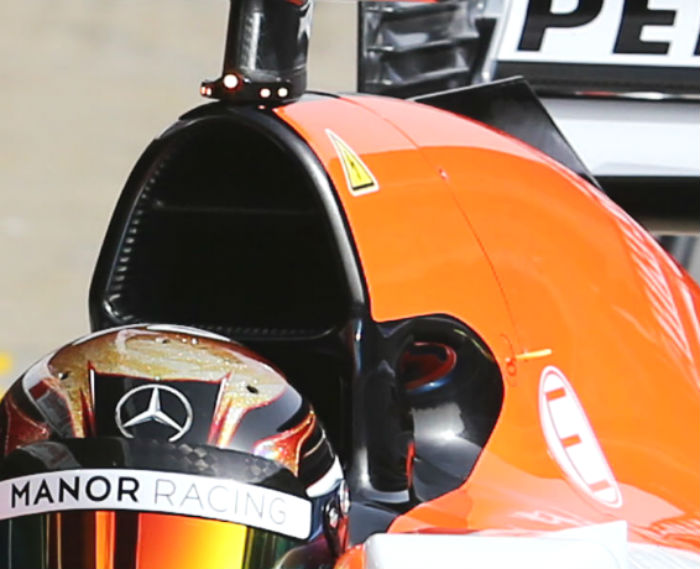
The construction of the roll hoop itself is in titanium, the design largely carries over from the 2016 design but has undergone further FEA optimisation.

Note the amount of material which has been removed from the structure in order to reduce its weight as much as possible.
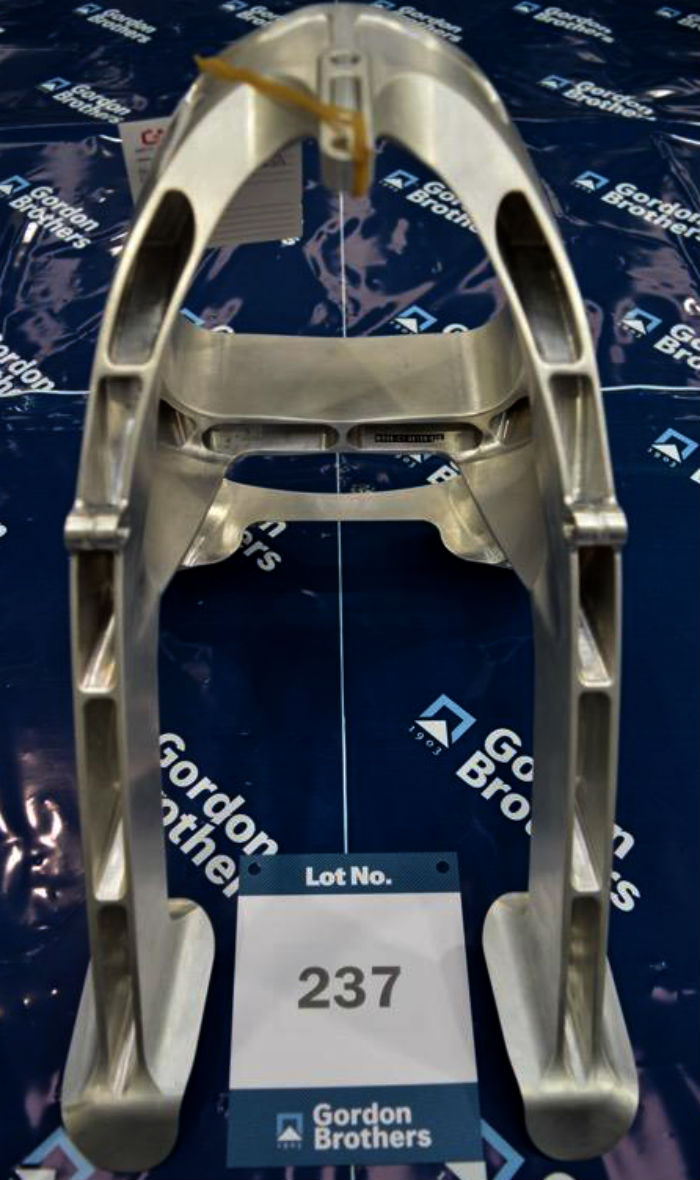
As the highest point on the car keeping weight down on the roll hoop is critical in managing the centre of gravity height.
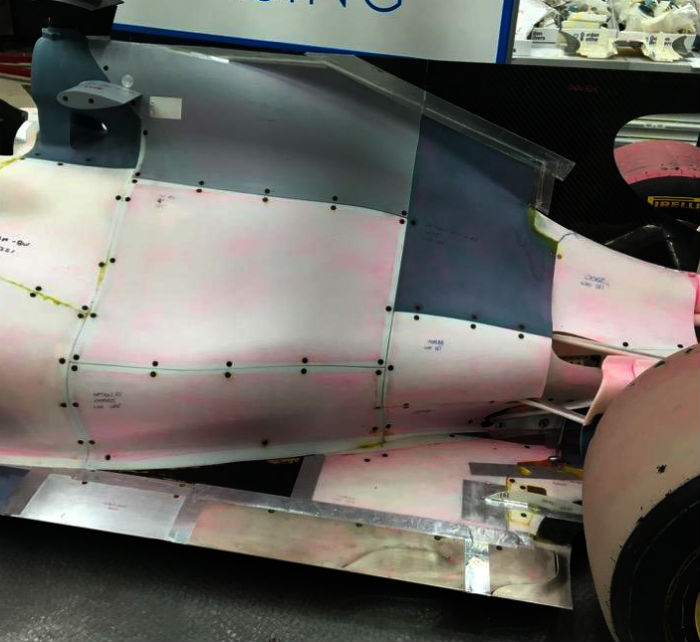
A look at the rear floor of the MRT06, just visible are small curved slits in the outer edge.
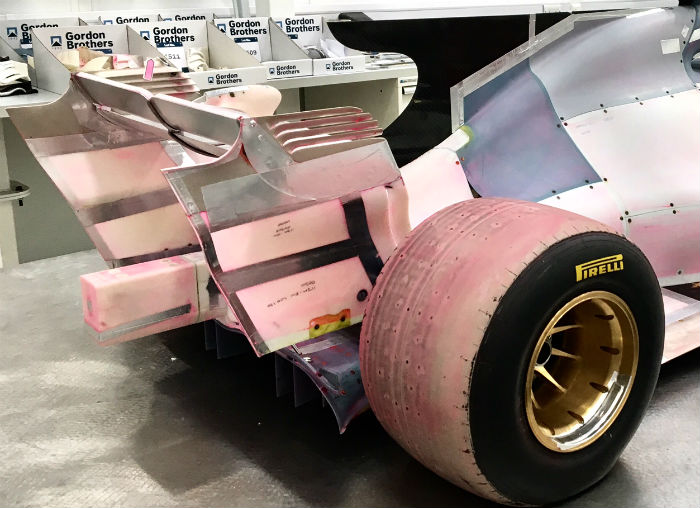
The late specification rear wing end plate was not as intricate as the version seen on the earlier model. Note also the shape of the fin on the engine cover.

Note that the wing has twin support pylons, rather than the single pylon seen on the earlier model and on the 2016 Manor. The 2017 design has a Ferrari SF70H style support mounted on top of the transmission casing.

From the rear it is possible to see the inward sweep of the rear wing end plates, the diffuser as well as the exhaust tail pipe layout.
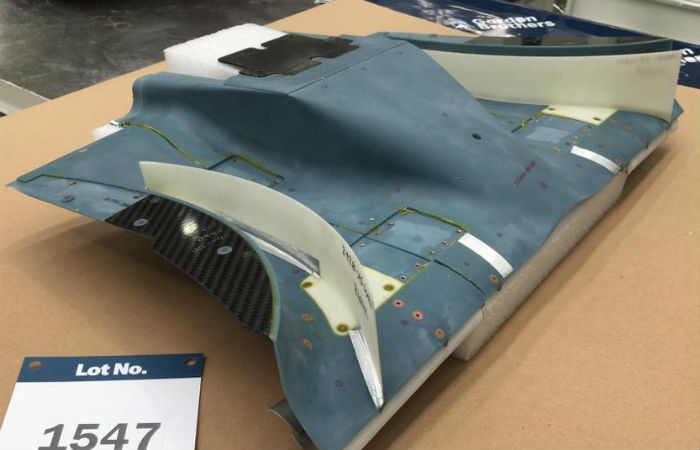
Manor trialled a number of different diffuser designs as you may expect and the collapse of the team revealed a few of the trial components. This incomplete part shows the general overall shape of the diffuser.
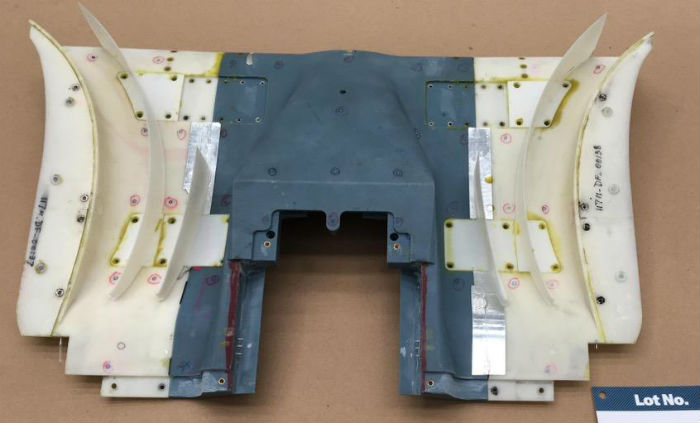
Note the outward sweep of the strakes on this design.
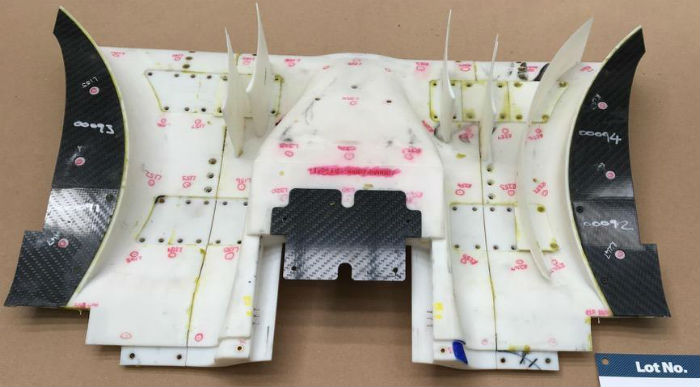
This version also has the same outward sweep shape but the strakes are much shorter, possibly this is an incomplete part.
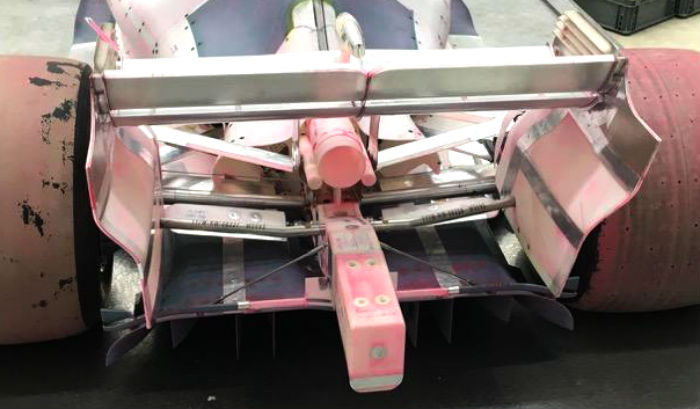
The rear suspension of the Manor featured a third element which was designed to collapse at high speed and reduce the drag of the car, at low speed the rear would pop up and increase downforce. Such systems were essentially banned at the start of the 2017 season. The rear wishbone angles were designed to optimise aerodynamic performance in a critical area of the car and a lot of work was undertaken to reduce unwanted compliances given the increased loads expected in 2017.
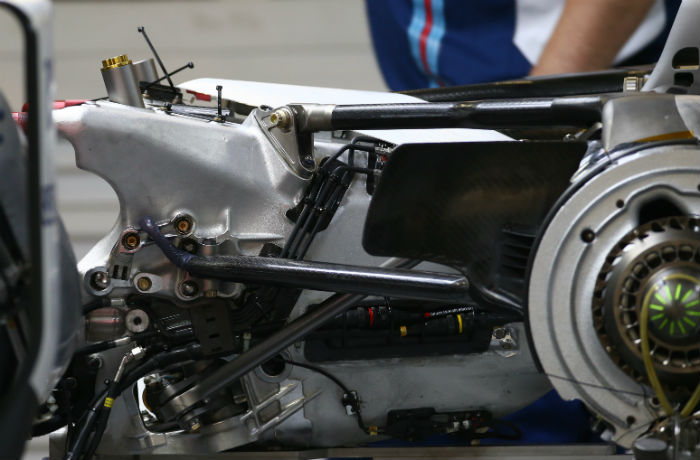
At the rear Manor would have used the 2017 Williams transmission (above) though it would have been fitted with a completely bespoke suspension system.
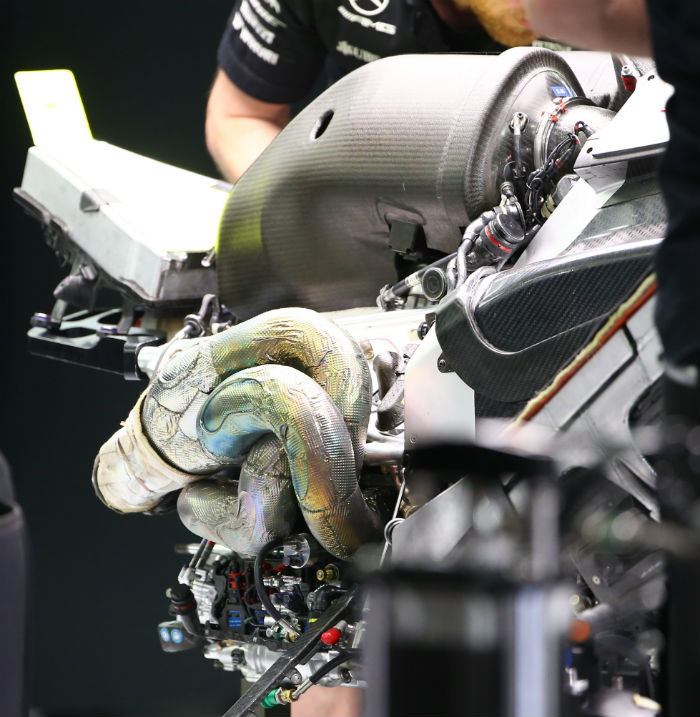
The Mercedes V6 power unit would have been used too, adding to speculation that the MRT06 would have be a regular Q2 runner.
Many former Manor staff have commented that they felt that the MRT06 would have been a competitive car and the fact that it will never race is something of a missed opportunity. According to senior members of the team about 91% of the parts for the MRT06 were completed when the team entered administration. At that point work on the 2017 car slowed and efforts switched to adapting the 2016 MRT05’s to the new regulations so that an interim car could have been made ready for the Australian Grand Prix, while the MRT06 could have been introduced for the Bahrain Grand Prix in April.
It has been speculated that the team losing 10th place in the constructors championship in 2016 resulted in the collapse of the team but really while it did cost the team £11 million that was not the major factor of the teams failure. Its owners had hoped to build up the team and sell it on for a profit, but the new Superlicence points system has seriously reduced the pool of available pay-drivers and it became rather unclear how Manor would have raised revenue. It proved impossible to sell the team (at least for the desired price).
Ultimately the team closed and all of the staff were laid off with only small redundancy packages and some uncertainty about the future and what was becoming a very good and talented small racing team was sadly no more.
Most of the team assets including most of the items pictured here are being auction off online – see
MANOR F1 AUCTION
Tantalisingly the sale does not include the 2017 chassis and the parts relating to them – the future and whereabouts of them is unclear.
